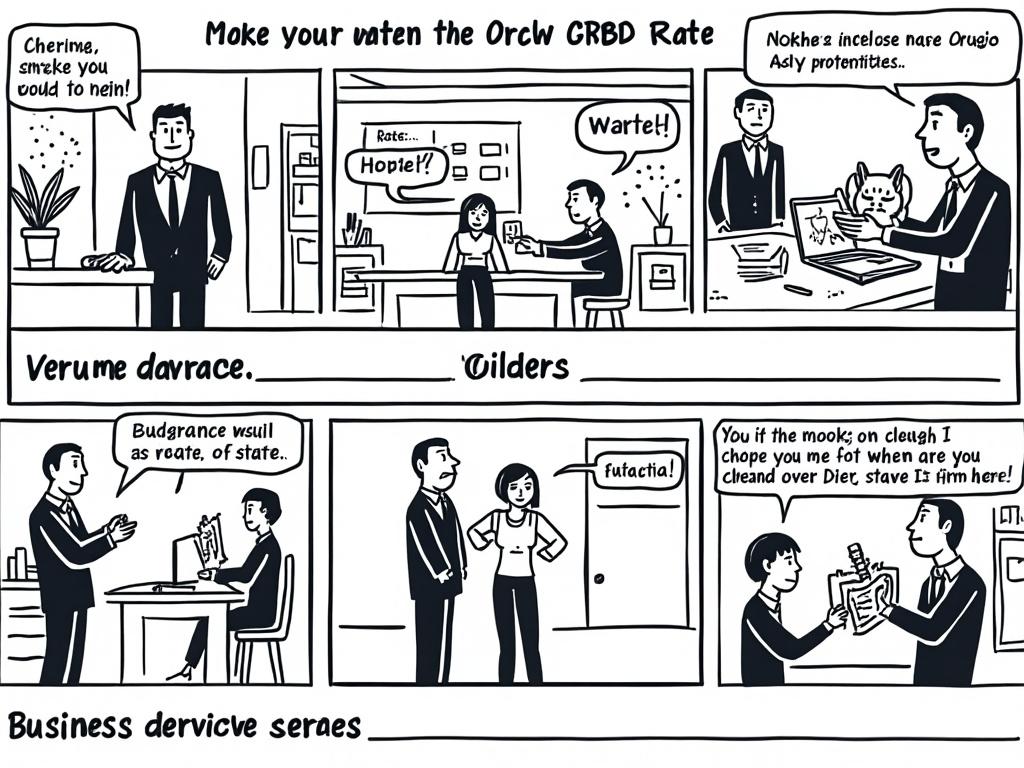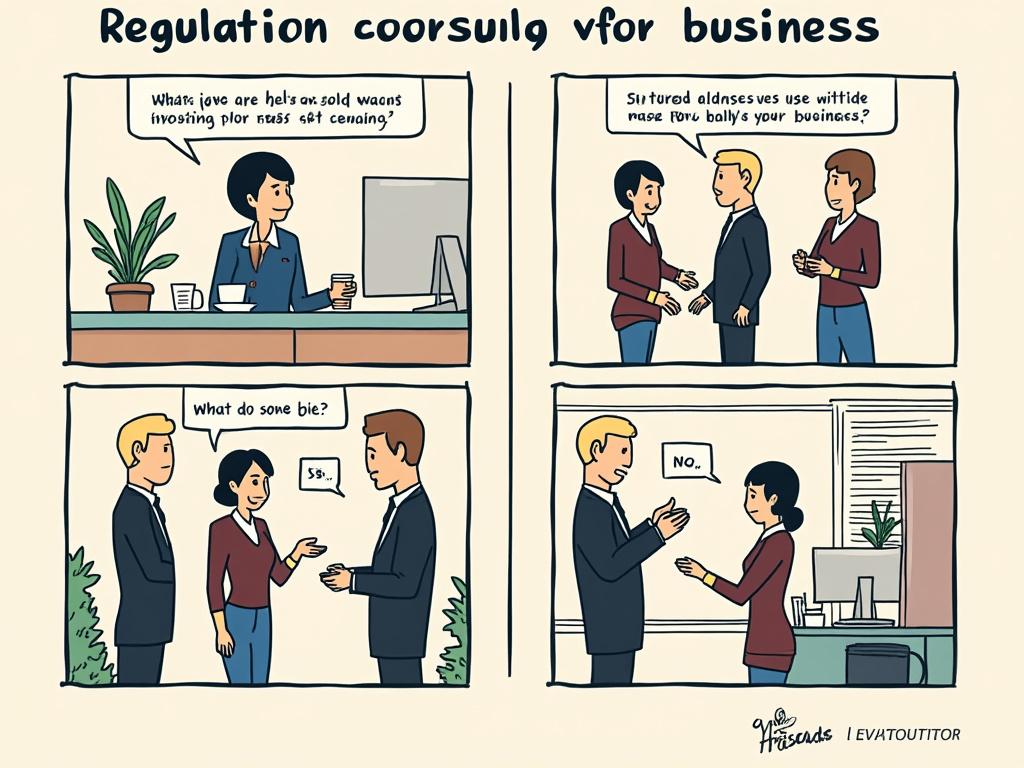
Hiring Employees in Estonia: A Comprehensive Guide for Small Businesses
Reading time: 12 minutes
Table of Contents
- Introduction: The Estonian Employment Landscape
- Legal Requirements for Employers
- Understanding Estonian Employment Contracts
- Payroll and Tax Obligations
- Managing Remote and Hybrid Workforces
- Effective Talent Acquisition Strategies
- Cultural Considerations and Best Practices
- Common Pitfalls and How to Avoid Them
- Conclusion: Building a Sustainable Estonian Workforce
- Frequently Asked Questions
Introduction: The Estonian Employment Landscape
Navigating the Estonian employment landscape as a small business owner can feel like learning a new language. You’re not just building a team—you’re establishing the foundation for your company’s future in one of Europe’s most digitally advanced nations.
Estonia’s unique position as a digital society has created a distinctive employment ecosystem that blends traditional European labor protections with forward-thinking flexibility. With over 99% of government services available online and a workforce increasingly comfortable with digital collaboration, Estonia offers small businesses unprecedented opportunities—if you know how to navigate the system.
Let’s be clear: successful hiring in Estonia isn’t about perfect understanding from day one—it’s about strategic navigation through the regulatory framework while building meaningful connections with your team members.
What if your small business could tap into Estonia’s talent pool while avoiding the common compliance headaches that plague many foreign employers? This guide aims to transform potential employment challenges into strategic advantages for your growing business.
Legal Requirements for Employers
Before you post your first job listing, you need to understand the foundational legal requirements that govern employment relationships in Estonia.
Business Registration and Prerequisites
Every employer in Estonia must first establish a legal entity or register as a branch of a foreign company. The process is remarkably streamlined compared to many European countries, with Estonia’s e-Residency program enabling digital company formation in as little as one business day.
Key prerequisites include:
- Registration with the Commercial Register (Äriregister)
- Registration as an employer with the Tax and Customs Board
- Setting up mandatory insurance coverage including workplace accident insurance
- Establishing a compliant payroll system or partnering with a service provider
Pro Tip: While registration itself is straightforward, your business classification will affect your tax obligations and reporting requirements. Consider consulting with an Estonian accounting professional before finalizing your business structure.
Workplace Safety and Employee Rights
Estonian law places significant emphasis on workplace safety and employee wellbeing. The Occupational Health and Safety Act requires employers to:
- Conduct and document workplace risk assessments
- Provide adequate safety training to all employees
- Ensure appropriate working conditions (including for remote workers)
- Maintain accident insurance and reporting procedures
Employers must also respect fundamental employee rights including protection against discrimination, guaranteed leave periods, and maximum working hours. The Labor Inspectorate (Tööinspektsioon) actively monitors compliance, with violations potentially resulting in fines of up to €32,000 for serious infractions.
As Rainer Ratnik, employment attorney at Ellex Raidla, notes: “Many foreign companies underestimate the strength of employee protections in Estonia. Despite its business-friendly reputation, Estonia maintains robust labor standards that employers must navigate carefully.”
Understanding Estonian Employment Contracts
The employment contract forms the cornerstone of your relationship with Estonian employees, and understanding its nuances is essential for successful workforce management.
Contract Types and Their Applications
Estonian law recognizes several employment arrangements, each with specific applications and limitations:
| Contract Type | Best Used For | Maximum Duration | Notice Period | Key Considerations |
|---|---|---|---|---|
| Permanent Employment Contract (Tähtajatu tööleping) |
Core team members, long-term positions | Indefinite | Minimum 30 days | Difficult to terminate without substantiated cause |
| Fixed-Term Contract (Tähtajaline tööleping) |
Project-based work, seasonal needs, temporary replacements | 5 years (including extensions) | Varies based on contract length | Converts to permanent after two consecutive renewals |
| Authorization Agreement (Käsundusleping) |
Consultants, advisors, board members | Per agreement | As specified in contract | Not an employment relationship; different tax treatment |
| Contract for Services (Töövõtuleping) |
Specific deliverables or outcomes | Until completion of agreed work | Per contract terms | Focused on results rather than process; contractor relationship |
Quick Scenario: Imagine you’re launching a technology startup with mixed staffing needs. You might employ developers under permanent contracts for stability, use fixed-term contracts for marketing specialists during product launches, and engage UX consultants under authorization agreements for periodic expert input.
Mandatory Contract Elements
Estonian employment contracts must contain specific elements to be considered valid:
- Identifying information for both employer and employee
- Job description and workplace location
- Compensation details including salary, payment schedule, and additional benefits
- Working time arrangements including hours, breaks, and leave entitlements
- Start date and, for fixed-term contracts, end date with justification
- Notice periods for contract termination
- Reference to collective agreements if applicable
Well, here’s the straight talk: While Estonian contracts require these specific elements, they need not be overly complex. Many small businesses benefit from using standardized templates from the Labor Inspectorate, customized to their specific needs.
Probationary Periods and Performance Management
Estonian law allows probationary periods of up to 4 months, during which either party may terminate the employment relationship with 15 calendar days’ notice. This provides valuable flexibility for assessing employee fit.
For effective performance management:
- Document performance expectations clearly in the employment contract
- Conduct and document regular performance reviews
- Address performance issues promptly with written improvement plans
- Maintain comprehensive records of all employment-related communications
Remember that termination after the probationary period becomes significantly more complex, requiring substantiated grounds such as redundancy, performance issues, or misconduct—all with appropriate documentation.
Payroll and Tax Obligations
Understanding and managing the Estonian payroll system is perhaps the most technically demanding aspect of employing staff in the country. Let’s break it down into manageable components.
The Estonian Tax Framework
Estonia’s tax system is renowned for its simplicity regarding business profits (taxed only upon distribution), but employment taxation follows a more conventional European model:
- Income Tax: Flat rate of 20% applied to taxable income
- Social Tax: 33% of gross salary, paid entirely by the employer
- Unemployment Insurance: 0.8% contribution from employees and 0.8% from employers
- Funded Pension Contribution: 2% from employee (for those who have joined the system)
For a practical example, let’s examine the tax calculation for an employee with a €2,500 monthly gross salary:
- Employer pays: €2,500 (gross salary) + €825 (social tax) + €20 (unemployment insurance) = €3,345 total employment cost
- Employee receives: €2,500 – €500 (income tax) – €20 (unemployment insurance) – €50 (pension contribution) = €1,930 net salary
This creates an effective tax wedge of approximately 42%, which is moderate by European standards but significant for employers accustomed to less comprehensive social systems.
Payroll Management Approaches
Small businesses typically choose one of three approaches to payroll management:
- Internal management using Estonian accounting software (suitable for businesses with Estonian-speaking staff)
- Outsourcing to local accounting firms (common for businesses with 1-20 employees)
- Using international employment platforms like Deel or Remote (popular for companies employing workers across multiple countries)
Whichever approach you choose, you must submit monthly tax declarations through the e-Tax system by the 10th day of the following month, with payments due by the same deadline.
“For small businesses entering Estonia, I generally recommend outsourcing payroll functions initially,” advises Kristel Tiits, founder of Estonian accounting firm Balance Books. “This eliminates the risk of compliance errors while giving business owners time to understand the system before potentially bringing it in-house.”
Managing Remote and Hybrid Workforces
Estonia’s digital infrastructure and progressive work culture have positioned it at the forefront of remote work innovation—long before the global pandemic accelerated this trend.
Legal Framework for Remote Work
Estonian employment law explicitly recognizes remote work arrangements through amendments to the Employment Contracts Act. Key considerations include:
- Remote work must be mutually agreed upon in writing, either in the initial employment contract or through a subsequent amendment
- Employers remain responsible for workplace safety even in remote settings
- Equipment and expense compensation arrangements should be clearly documented
- Monitoring of work performance must respect employee privacy
- Data security measures must be explicitly outlined and followed
Case Study: Telia Estonia, one of the country’s largest telecommunications companies, implemented a comprehensive remote work policy in 2018. Their approach included:
- Providing standardized equipment packages for home offices
- Establishing clear availability expectations (core hours vs. flexible time)
- Implementing quarterly in-person team days to maintain culture
- Creating detailed security protocols for handling sensitive information
This program resulted in a 28% increase in employee satisfaction and a 15% reduction in office space costs while maintaining productivity levels—demonstrating the potential benefits of well-structured remote work policies.
Practical Implementation Strategies
For small businesses implementing remote or hybrid work models in Estonia, consider these practical approaches:
- Home Office Allowance: Many Estonian employers provide a taxable monthly allowance (typically €50-200) for remote employees to cover internet, electricity, and home office expenses
- Equipment Provision: Clearly document all company equipment provided to employees and establish protocols for maintenance and return
- Working Hours: Establish expectations around core availability hours while offering flexibility where possible
- Health and Safety: Provide ergonomic guidelines and consider offering home office risk assessments
- Team Integration: Develop specific strategies for including remote workers in company culture and decision-making
Ready to transform complexity into competitive advantage? Estonian remote work regulations can actually become a strategic asset when properly implemented, allowing small businesses to attract talent from across the country and potentially throughout the EU.
Effective Talent Acquisition Strategies
Estonia’s labor market presents unique opportunities and challenges. With a population of just 1.3 million, the talent pool is limited in absolute terms, yet highly educated and technically proficient.
Understanding the Estonian Talent Landscape
The Estonian workforce is characterized by several distinctive features:
- High digital literacy: Estonia ranks among Europe’s leaders in digital skills, with 89% of the population using the internet regularly
- Strong language skills: Besides Estonian, many professionals speak English (54%), Russian (48%), and often Finnish or German
- Technical education: Estonia produces approximately 3,000 IT graduates annually despite its small population
- Geographic concentration: Nearly half of all job opportunities are in the capital region of Tallinn
- Increasing competition: International companies have established significant presence, creating salary pressure in technical fields
These factors create both opportunities and challenges for small businesses. While the talent quality is exceptional, competition for specialists can be intense, particularly in technology, finance, and creative fields.
Recruitment Channels and Best Practices
Successful recruitment in Estonia typically involves multiple channels:
- Online job portals: CV.ee and CV-Online dominate the Estonian market, with LinkedIn growing in importance for professional roles
- University partnerships: TalTech, University of Tartu, and Estonian Entrepreneurship University offer internship and recruitment programs
- Industry-specific communities: Engagement with groups like Latitude59, Startup Estonia, and Estonian Association of Information Technology can provide access to specialized talent
- Recruitment agencies: For specialized positions, agencies like Manpower, Fontes, and CV Keskus offer candidate sourcing services
- Employee referrals: Given Estonia’s small professional networks, referral programs can be exceptionally effective
Case Study: Veriff, an Estonian identity verification company, created a distinctive recruitment approach combining technical challenges, transparent compensation information, and an emphasis on their international growth trajectory. This strategy helped them grow from 30 to over 300 employees in three years despite intense competition from larger tech companies.
When crafting job postings for the Estonian market, effective practices include:
- Leading with growth and learning opportunities rather than just responsibilities
- Highlighting flexible working arrangements and remote possibilities
- Being transparent about salary ranges (increasingly expected in Estonian job markets)
- Emphasizing the impact of the role rather than just qualifications
- Communicating in both Estonian and English when possible
Cultural Considerations and Best Practices
Understanding Estonian workplace culture is essential for building effective teams and avoiding misalignments that can impact productivity and retention.
Estonian Workplace Values and Expectations
Estonian professional culture blends Nordic efficiency with technological progressiveness. Key cultural elements include:
- Direct communication: Estonians generally prefer straightforward, low-context communication with minimal small talk
- Results orientation: Performance is typically valued over presence, with focus on outputs rather than hours worked
- Personal space: Professional relationships tend to maintain some formality, with gradual progression to familiarity
- Work-life balance: Clear boundaries between professional and personal time are respected and expected
- Digital-first mindset: There’s a strong preference for efficient digital solutions over unnecessary meetings or paperwork
As Martin Villig, co-founder of Bolt (formerly Taxify), explains: “Estonian workplace culture values autonomy and competence. Micromanagement is generally seen as ineffective. Instead, clarity about expectations and outcomes—then giving people space to deliver—tends to work better.”
Building Effective Team Dynamics
Small businesses can foster effective team dynamics by adopting these approaches:
- Clear role definition: Estonian professionals typically prefer well-defined responsibilities and expectations
- Structured feedback: Regular, evidence-based feedback is generally more appreciated than casual praise
- Professional development: Continued learning opportunities are highly valued and contribute significantly to retention
- Celebration of achievements: While not excessively demonstrative, recognizing team successes reinforces value
- Respect for expertise: Technical competence typically commands more respect than hierarchical position
Practical Roadmap for Cultural Integration:
- Initial Onboarding: Focus on clear communication of expectations and objectives
- Team Integration: Create structured opportunities for collaboration rather than forced socialization
- Feedback Systems: Implement regular, two-way feedback mechanisms with actionable outcomes
- Development Planning: Establish clear growth pathways aligned with both organizational needs and individual aspirations
Common Pitfalls and How to Avoid Them
Even well-prepared employers can encounter challenges when hiring in Estonia. Here are the most common issues and strategies to prevent them.
Regulatory and Compliance Challenges
Misclassification of Workers
Estonian authorities increasingly scrutinize the distinction between employment and contractor relationships. Using authorization agreements (käsundusleping) or service contracts (töövõtuleping) for relationships that function as employment can result in significant penalties.
Prevention Strategies:
- Assess actual working conditions rather than just contract terminology
- Consider key factors like work schedule control, integration into the company, and economic dependency
- When in doubt, use proper employment contracts with appropriate tax withholding
- Maintain clear documentation of independent contractor relationships
Missing Administrative Deadlines
Estonian compliance often involves strict reporting timelines that carry penalties if missed.
Prevention Strategies:
- Implement calendar reminders for monthly tax declarations (due by the 10th)
- Set up automatic notifications for annual reporting requirements
- Consider outsourcing compliance functions to specialized service providers
- Maintain an updated compliance checklist specific to your business activities
Cultural and Management Missteps
Ineffective Communication Approaches
Many international employers struggle to adapt their communication style to Estonian expectations, creating friction and misunderstandings.
Prevention Strategies:
- Favor clear, specific instructions over general guidance
- Provide context and rationale for decisions rather than just directives
- Be prepared for direct feedback and occasionally blunt communication
- Focus communication on work content rather than relationship building initially
Compensation Misalignment
Estonia’s rapidly evolving labor market means that salary expectations can shift significantly, particularly in technical fields.
Prevention Strategies:
- Conduct regular market research on compensation trends (Fontes salary surveys are reliable references)
- Consider total compensation rather than just base salary
- Develop transparent progression frameworks for salary growth
- Be prepared to adjust compensation more frequently than in larger markets
Pro Tip: The right preparation isn’t just about avoiding problems—it’s about creating scalable, resilient business foundations. In Estonia, this means building systems that accommodate growth while maintaining compliance from the beginning, rather than retrofitting processes later.
Conclusion: Building a Sustainable Estonian Workforce
The journey of hiring and managing employees in Estonia offers small businesses both unique advantages and specific challenges. By understanding the regulatory landscape, embracing the cultural context, and implementing appropriate systems, you can build a sustainable and effective Estonian workforce.
Remember these key principles:
- Compliance as foundation: Estonian employment law creates a clear framework that, when properly implemented, provides stability for both employers and employees
- Digital advantage: The country’s advanced digital infrastructure enables efficient administration and flexible work arrangements
- Cultural awareness: Respecting Estonian workplace values creates stronger engagement and retention
- Strategic approach: Viewing employment not just as a necessity but as a strategic advantage for your business
Building an effective team in Estonia requires investment in understanding the local context, but offers remarkable returns through access to highly skilled professionals in one of Europe’s most innovative business environments. The businesses that thrive are those that view Estonian employment regulations not as obstacles but as frameworks for building sustainable, productive relationships.
As you move forward with hiring in Estonia, remember that perfection isn’t the goal—strategic progress is. Each step in developing your Estonian workforce builds competence and confidence for the next phase of growth.
Frequently Asked Questions
What are the minimum requirements for terminating an employee in Estonia?
Terminating an employee in Estonia requires both substantiated grounds and proper procedure. After the probationary period (maximum 4 months), employers must have either economic reasons (redundancy) or reasons related to the employee (performance issues, misconduct). The termination process requires written notice (30-90 days depending on tenure), proper documentation of the grounds for termination, and potentially a termination payment of 1-3 months’ salary. Improper termination can result in reinstatement orders or compensation of up to 3 months’ salary, so consultation with an employment specialist is highly recommended before initiating termination.
How can small businesses compete for talent against larger Estonian and international companies?
Small businesses can effectively compete for Estonian talent by emphasizing their unique advantages: greater autonomy and impact for employees, faster decision-making, more flexible working arrangements, personalized development opportunities, and equity participation. Rather than competing solely on salary, develop a comprehensive value proposition highlighting growth potential, meaningful work, and quality of life benefits. Additionally, consider targeting talent segments that larger companies often overlook, such as career-changers, returning expatriates, and professionals outside major urban centers who may value flexibility over maximum compensation.
What are the most cost-effective ways to provide employee benefits in Estonia?
Cost-effective employee benefits in Estonia include health insurance (with premiums around €300-500 per employee annually), which receives favorable tax treatment up to €100 per quarter; sports and wellness benefits through platforms like Stebby, which simplify administration while providing flexible options; supplementary pension contributions, which receive advantageous tax treatment; additional paid vacation days beyond the statutory 28 days; and professional development budgets. Another increasingly popular option is the tax-free transportation allowance of up to €300 per month for commuting costs. The most effective approach combines a core benefits package with a flexible allowance that employees can direct toward their personal priorities.






